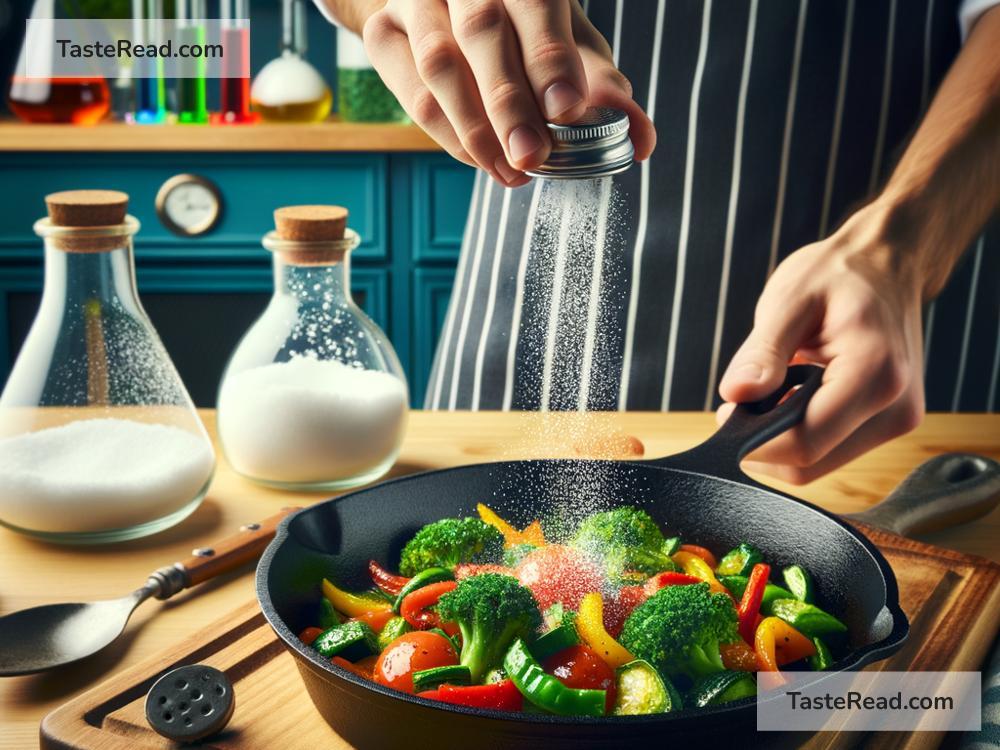The Science of Cooking with Chemical Imagination: Techniques and Tips
Cooking isn’t just putting ingredients together and hoping for delicious results; it’s a science mixed with creativity. Understanding the chemistry of cooking can transform your meals and make you a better chef. Whether you’re baking a cake, grilling meat, or whipping up a sauce, every process involves chemical reactions. By exploring this science and adding some imagination, you can unlock new flavors, textures, and cooking techniques.
In this blog, we’ll dive into the fascinating world of food chemistry and provide simple tips to help you harness this knowledge. Don’t worry — no lab coat is required! Let’s explore how science and creativity create culinary magic.
Cooking: A Chemical Playground
When you cook, you’re performing experiments, even if you don’t realize it. Cooking changes ingredients at a molecular level. Proteins, fats, and carbohydrates respond to heat, acid, water, and even the mechanical force of stirring or kneading. Let’s explore how some basic kitchen chemistry works.
1. Heat: The Ultimate Catalyst
Heat is one of the main drivers of change in cooking. When you apply heat to food, it triggers chemical reactions. For example:
– Caramelization: When you heat sugar, it melts and breaks down into rich, sweet compounds. This is why caramel and roasted vegetables taste so delicious.
– Maillard Reaction: This reaction happens when proteins and sugars in food are heated together, creating browning and a deep, savory flavor. It’s what makes grilled steak, toasted bread, and roasted coffee beans taste so amazing.
But heat isn’t just about flavor. It also changes food texture. For example, heat causes proteins in eggs to coagulate, turning runny whites and yolks into solid forms like scrambled eggs or boiled eggs.
2. Acids and Bases: Flavor Boosters
Acids like lemon juice, vinegar, and yogurt play an essential role in cooking. They add tangy flavors, tenderize meats, and even preserve foods. For instance:
– Adding lemon juice to fish can “cook” it chemically in a dish called ceviche.
– Vinegar in marinades breaks down the tough fibers in meat, making it softer.
Bases, like baking soda, are less common but equally powerful. Baking soda releases carbon dioxide gas when mixed with acidic ingredients, helping baked goods rise and become fluffy. Try adding a pinch of baking soda to pancakes for extra airiness!
3. The Magic of Emulsification
Have you ever wondered how oil and vinegar combine in salad dressing, or how mayonnaise achieves its creamy texture? This happens thanks to emulsification, where two liquids that don’t normally mix (like oil and water) are forced to blend. Ingredients like mustard or eggs act as emulsifiers, helping create smooth, stable mixtures. Next time you make vinaigrette, add a dash of mustard for a richer, creamy texture.
Tips for Cooking with Chemical Imagination
Now that we know the basics, let’s look at how you can use science in creative ways to improve your cooking. Here are techniques and tips inspired by chemical imagination:
1. Experiment with Heat Levels
Heat doesn’t just cook food; it can control flavor and texture too. For example:
– Use low-temperature cooking to preserve delicate flavors and tenderness. This is great for poaching fish or slow-cooking pork.
– Try high-heat cooking like searing and grilling to create bold, caramelized flavors through the Maillard reaction.
You can even use temperature for precise cooking, like sous-vide. In sous-vide, food is sealed in a bag and cooked in water at a controlled temperature to ensure perfect results.
2. Balance Flavor Chemistry
The best dishes balance five core tastes: salty, sweet, sour, bitter, and umami. You can use food chemistry to enhance these:
– To play up sweetness, try caramelizing onions or roasting vegetables.
– For sourness, squeeze some fresh citrus juice or add vinegar to brighten the dish.
– Enhance umami flavors by using ingredients like soy sauce, mushrooms, or parmesan cheese.
Taste-test as you cook, tweaking flavors to achieve harmony.
3. Use Science to Perfect Baking
Baking is often called a science because it relies on precise chemical reactions. Here are a few tips:
– Use cold butter for flaky pastries. Cold fat releases steam during baking, creating layers.
– Measure your ingredients carefully. Incorrect amounts of leavening agents like baking powder or baking soda can cause cakes to collapse or overflow.
– For chewier cookies, refrigerate the dough for several hours before baking. This allows the flour to hydrate, changing the texture.
4. Explore Molecular Gastronomy
Molecular gastronomy combines food science with artistic flair. While it may sound complicated, there are simple ways to try it:
– Use spherification to turn liquids into gel-like spheres, adding an exciting texture to dishes.
– Try foams by using a handheld frother to create airy sauces or toppings.
– Play with freezing and cooling, like making homemade ice cream with liquid nitrogen (carefully!).
While molecular gastronomy requires extra tools, it’s a fun way to experiment and impress your dinner guests.
Conclusion: Science Meets Creativity
Cooking is where science meets imagination, giving you endless opportunities to experiment and innovate. By understanding the basics of food chemistry, you’ll have the confidence to tweak recipes, balance flavors, and create dishes nobody has tried before.
Remember, cooking is a mix of learning and playing. Don’t be afraid to make mistakes — even failed experiments teach valuable lessons. Whether it’s caramelizing onions for extra sweetness or perfecting the fluffiest pancakes with baking soda, every dish can be a delicious tribute to the science of cooking.
So grab your apron and explore the chemical wonders in your kitchen. Who knows? You might just discover your next culinary masterpiece!


